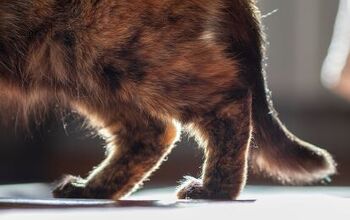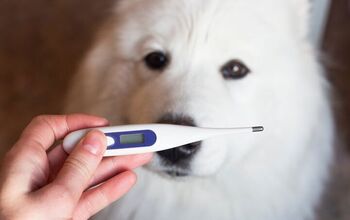A Short Guide to Eye Diseases in Dogs

Though your dog’s nose is probably his strongest sensory organ, his vision is very important as well. Unfortunately, dogs are prone to a wide variety of eye diseases which can impact vision or cause complete blindness. Keep reading to learn about six of the most common eye diseases in dogs and how to identify and treat them.
Entropion/Ectropion
Both of these conditions have to do with the dog’s eye rolling inward or outward. Entropion occurs when the dog’s eyelid rolls inward and the eyelashes rub against the surface of the eye, causing pain, increased tear production, and corneal damage. When caused by a secondary condition, entropion can be temporarily resolved by suturing the eyelids in place – this is called eyelid tacking. Surgical options are also available for more severe cases where a permanent fix is needed.
Related: What is Progressive Retinal Atrophy in Dogs
Ectropion is the opposite – the eyelid rolls outward, causing the tissue lining the inner eyelid to be exposed. This exposure can lead to reduced tear production which may cause the eye to dry out, worsening any pain or discomfort caused by the condition in the first place. This condition can be treated with topical lubricants to an antibiotic ointment along with good facial hygiene.
Persistent Pupillary Membranes
Often shortened to PPM, persistent pupillary membranes are simply a sheet of mesodermal tissue that, under normal circumstances, develops into the pupil of the eye while the puppy develops in its mother’s womb. When the tissue doesn’t completely disappear and strands of it become attached to other parts of the eye, it can cause those parts of the eye to malfunction. Symptoms of PPM may include visual impairment, visible strands crossing the pupil, cloudiness in the cornea, and abnormal eye movement. Unfortunately, there is no effective treatment for PPM but many cases resolve on their own.
Related: What You Need To Know About Glaucoma In Dogs
Progressive Retinal Atrophy
As the name suggests, progressive retinal atrophy is an eye condition that worsens over time. Also known as PRA, this condition causes a dog to eventually go blind, though it is not a painful condition nor do the eyes really change in appearance. The first symptom of PRA is usually night blindness, though many dogs don’t show signs that their vision has changed. There is no cure for PRA but most dogs adapt well to a loss of vision as long as their environment remains stable.
Distichiasis
This condition is characterized by the abnormal growth of an eyelash – it either grows from an abnormal location or in an abnormal direction. In most cases, the distichiae emerges through the tear duct into the eye and, when they form, there is usually more than one. This condition most commonly affects cocker spaniels, shih tzus, dachshunds, retrievers, and sheepdogs but can affect other breeds as well. Treatment is often not required as mild symptoms can be managed with lubricants or manual removal.
Retinal Dysplasia
This condition is characterized by cells or layers of retinal tissue that have failed to develop properly. Retinal dysplasia usually develops around 6 weeks of age, causing the retina to develop layers of folded tissue instead of lying flat. Though some cases produce no symptoms, this condition can also render a puppy partially or totally blind. Unfortunately, there is no treatment.
If you notice some kind of abnormality with your dog’s eyes, don’t ignore it – report it to your veterinarian to get an accurate diagnosis. While many eye conditions are minor, some of them can lead to permanent damage so prompt treatment is a must.

Kate Barrington is the loving owner of two cats (Bagel and Munchkin) and a noisy herd of guinea pigs. Having grown up with golden retrievers, Kate has a great deal of experience with dogs but labels herself a lover of all pets. Having received a Bachelor's degree in English, Kate has combined her love for pets and her passion for writing to create her own freelance writing business, specializing in the pet niche.
More by Kate Barrington























